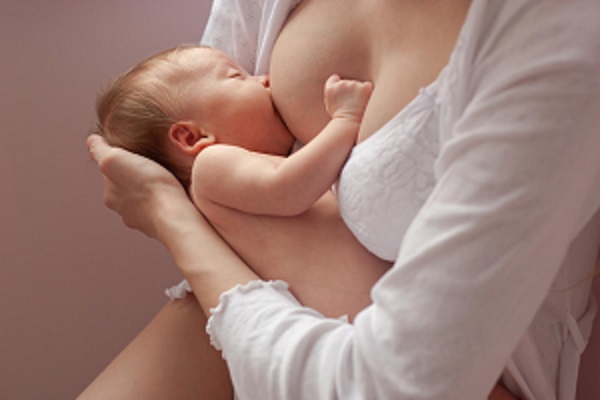
Breastfeeding can mean better health for both you and your baby now and in the future. It can also be a bonding and enjoyable experience for you both.
Babies who are breastfed are less at risk of stomach upsets, colds and infections, diabetes, asthma and eczema, obesity and high blood pressure later in life. The health benefits of breastfeeding for mothers include less risk of breast and ovarian cancer and osteoporosis in later life and a faster return to pre-pregnancy figure.
Getting Started
Immediately after your baby is born he will be placed on your chest for skin-to-skin contact. Most babies are very alert and anxious to suck soon after they are born. Holding him in skin-to-skin contact will give him time to find your breast and start to suckle. Your midwife will help you with this first breastfeed if you need it.
Having your baby with you at all times, both in the hopsital and when you go home, will help you learn their way of ‘asking’ for a feed. Your baby is looking for a feed when he or she:
- Starts making sucking noises
- Move their head from side to side while opening and closing their mouth
- Cries – though this is usually a late indication of hunger
Positioning You and Baby
Correct positioning and attachment of your baby will ensure that he gets plenty of breast milk and you avoid getting sore nipples. Most of the problems experienced by breastfeeding mothers in the first few weeks (for example, sore nipples, engorgement, mastitis) occur either because the baby is not attached to the breast in the right way or because he is not being put to the breast often enough. Ask for help if you are unsure.
Here are a few guidelines to help make sure that your baby is able to feed well:
- Your baby should be held close to you and across your chest.
- He should be facing the breast, with his head, shoulders, and body in a straight line.
- His nose or top lip should be opposite the nipple.
- He should be able to reach the breast easily, without having to stretch or twist.
- Remember always move your baby towards your breast rather than your breast to the baby.
How to Attach
Some tips to help your baby attach:
- The baby’s whole body should be in contact with your upper body and be facing your breast (his head and body should be in a straight line) with his nose at the level of your nipple.
- Support his back and shoulders with your arm but leave his head free to tilt back when he starts feeding.
- When he opens his mouth wide bring him onto the breast with his chin pointing forward and touching the breast below the nipple. Allow him to take in most or all of the areola (the dark area around the nipple) into his mouth (more below the nipple than above).
- You can encourage him to open his mouth wide by gently brushing his upper lip with your nipple.
When your baby is correctly attached to your breast you will notice that:
- His mouth is wide open and he has a big mouthful of breast
- Their chin is touching your breast
- His bottom lip is curled back (you may not be able to see this)
- If you can see any of the areola (the brown skin around the nipple), more is visible above his top lip than below his bottom lip.
- His cheeks stay full and rounded during sucking.
- His sucking pattern changes from short sucks at the beginning to long deep sucks with pauses.
maternity & infant
Originally posted 2018-02-19 14:34:09.









